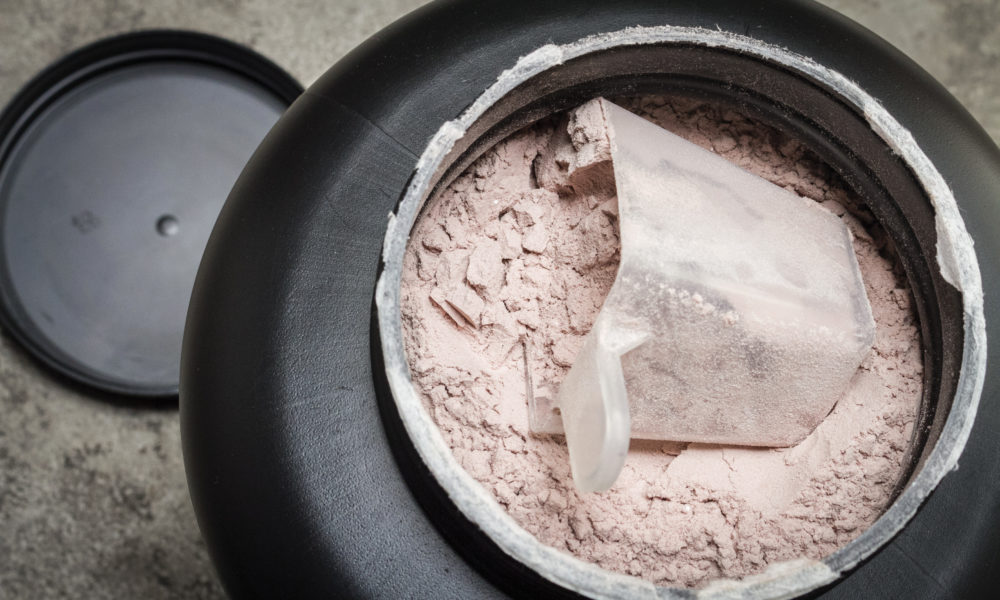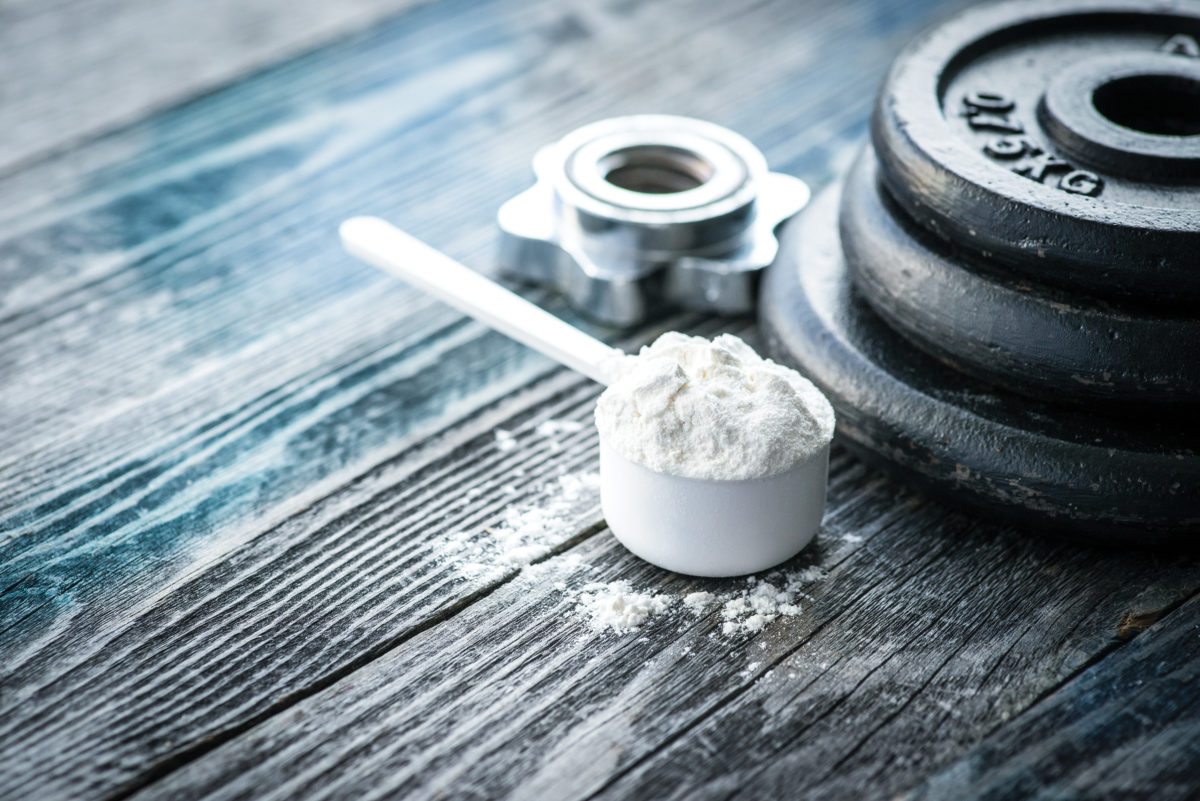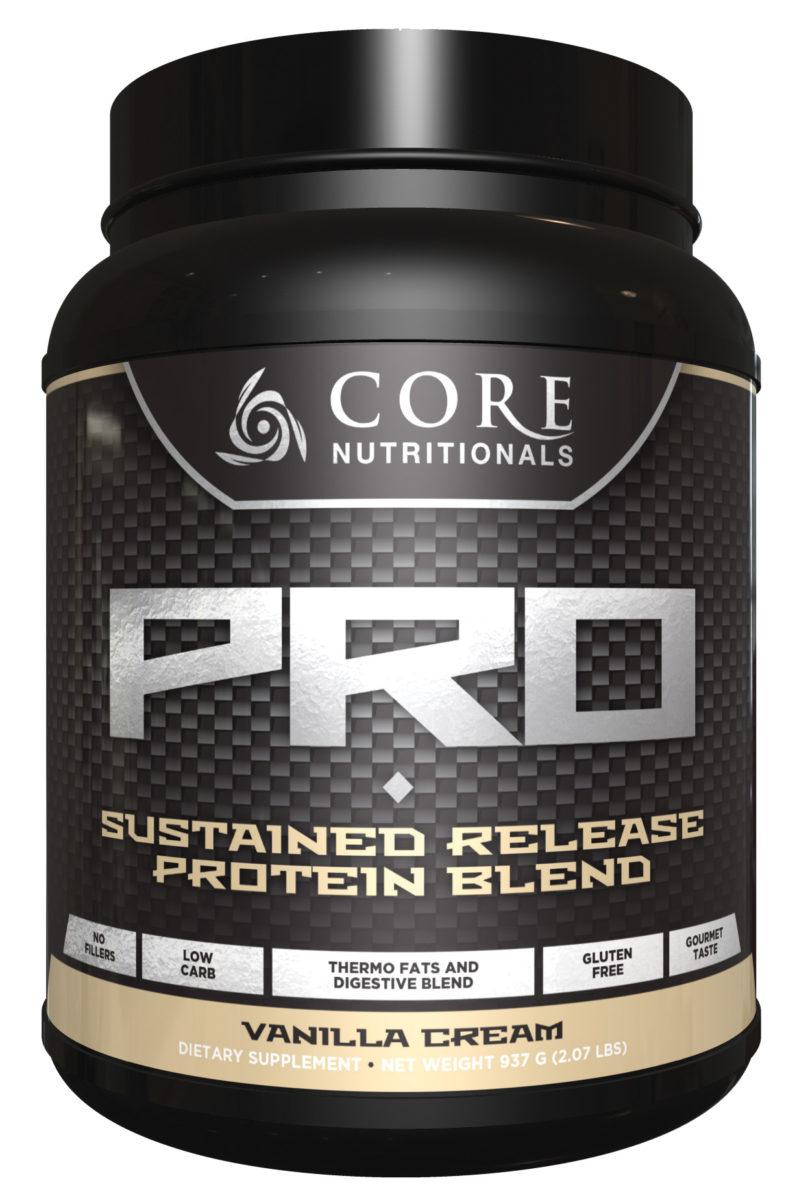

The latest anabolic innovations to your favorite supplement.
By Adam M. Gonzalez, PhD, CSCS, CISSN
Protein powder continues to be one of the most effective and well-established supplements for building muscle, burning fat, and improving overall health. Consumer demand and painstaking research has lead to several innovations in the last few years. Some modest tweaks simply reflect the attitude of the buyer and a desire for convenience, while other developments represent years of scientific discovery and hard-earned lessons from the trenches. Together, these new innovations in the protein-powder market are a good indicator of the future of sports supplements.
Native Whey Proteins
All proteins start as long strands of amino acids constructed into highly specific three-dimensional shapes. A protein in its native state has a properly folded structure and the protein integrity is fully conserved. This is in contrast to the denatured state, in which the structure is disrupted and the strands of amino acids begin to unravel. Most whey protein powders undergo two processes of filtration and pasteurization. Native whey protein eliminates the second filtration process in effort to provide the pure native proteins from milk.
Several high-quality whey protein supplements are now manufactured as primary products of milk rather than as a by-product of cheese manufacturing. Native whey protein comes from milk rather than cheese. The filtration process can affect protein structure by altering the molecular interactions in the native proteins, which could potentially alter the digestibility of the protein. All whey protein sold in the United States needs to first be pasteurized, which means the whey protein will be exposed to a level of heat that may cause changes in some of the proteins. However, native whey only goes through one high-heat pasteurization process (other types of protein are pasteurized twice). All of the remaining processing steps to native whey proteins are then performed under low temperatures so the peptides not exposed to fluctuating pH changes to avoid denaturing the native structures. For this reason, native whey protein is often marketed as “undenatured whey protein.”
Ultimately, the jury is still out whether native whey is significantly better for your health or physique than traditional whey. Many native whey manufacturers use organic grass-fed hormone-free milk, and eschew extra ingredients such as gums and sweeteners, resulting in a whey protein isolate that contains very little fats, lactose, or carbohydrates. If you believe that the less processing your food receives the better, this could be the protein for you.
Added Peptides
Some manufacturers are beginning to add bioactive peptides to protein powders. These growth factor ingredients are typically components of bovine colostrum, milk from a pregnant cow, and may positively impact exercise performance and recovery. These added ingredients include insulin-like growth factors, transforming growth factors, immunoglobulins, cytokines, lactoferrin, and lysozyme, which may improve immune function, anabolism, and muscle hypertrophy and strength. However, even the direct research on bovine colostrum supplementation remains equivocal. While some research shows benefits for exercise performance for those who supplement with 20 to 60 grams per day, other research studies show no benefit.
All in all, while the influence of bovine colostrum on the growth and development of calves (baby cows) is well understood, the influence of these growth factors on adult human health and exercise performance remains to be fully determined. Additionally, although these added peptides are not considered a banned substance, they may contain IGF-1, which is banned by the International Olympic Committee. Regular supplementation may have the potential to increase blood IGF-1 and increase the risk of testing positive for banned substances. If you are one of the 99.9 percent of protein powder consumers who are not drug tested by the IOC, it may be worth trying.

Stacked Ergogenic Aids
Protein supplements provide a convenient source of high-quality protein and have demonstrated several benefits in the arena of exercise performance and muscle growth. However, it’s not the only player in the supplement game. Several other ingredients including creatine, beta-alanine, and HMB have shown to work synergistically with supplemental protein. Thus, several manufacturers are adding these ingredients directly into their protein formulas to capitalize on these benefits.
Creatine is among the world’s most highly researched supplements. Creatine supplementation increases the intramuscular storage of high-energy phosphates for energy production allowing athletes to work harder in the gym, and, over time, promotes greater muscle size and strength.
Beta-alanine supplementation increases the storage of carnosine, an intramuscular buffer that can delay fatigue during high-intensity exercise. Supplementation with beta-alanine has shown to work synergistically with both protein and creatine. HMB is a metabolite of the amino acid leucine, which has both anabolic and anti-catabolic effects on the muscle allowing for better short-term recovery and long-term muscle growth. A single shake containing multiple beneficial ingredients provides a convenient supplementation strategy for consumers.
Digestive Enzymes
All the protein we eat start as long stands of amino acids that need to be continuously cleaved and broken down to be digested. Digestive enzymes are a critical part of the digestion and absorption process. Without these enzymes, your body would not be able to convert protein into the body’s usable form: amino acids.
While some dietary protein is digested within the stomach itself, most of the digestion process takes place in the small intestine. The pancreas releases several enzymes into the small intestine known as proteases. These proteases chop and cleave large proteins into smaller, usable amino acids. The amino acids can then be absorbed into your bloodstream and distributed to your muscles. Therefore, some manufacturers are adding certain digestive enzymes to their protein powders to make the digestion process more efficient and improve protein absorption in the body. However, the research on digestive enzymes and their ability to aid in protein absorption and utilization in healthy subjects is quite limited.
One study in the Journal Of The International Society Of Sports Nutrition investigated the effects of consuming a patented blend of digestive proteases along with 50 grams of whey protein concentrate in healthy men. Interestingly, the protease supplement did increase the rate of digestion of the whey protein. However, although promising, it’s not clear if this would lead to meaningful differences in muscle growth over time.

Protein Blends
Protein quality is directly related to the amino acid composition and digestibility of the protein source. Several studies have indicated that high-quality proteins such as milk, whey, casein, and soy can spark muscle protein synthesis and promote muscle growth. When seeking to maximize muscle growth, it appears that milk proteins and their isolated forms, whey and casein, offer an anabolic advantage over soy proteins. Additionally, it is a known fact that whey protein digests more rapidly than casein protein. Whey protein rapidly elevates amino acid concentrations in the blood, while casein protein allows for a slower, yet more sustained, rise in amino acids. Protein manufactures continue to produce protein blends to supply the “best of all worlds.” When you consume whey along with slower-digesting proteins, the whey serves to rapidly spike muscle protein synthesis and the slower-digesting proteins serve to maintain the rate of muscle protein synthesis for longer. Thus, protein blends have shown to be an effective post-exercise nutritional supplement in several research studies.
Lean And Clean
With the growing trend of “natural” food items, several protein manufacturers are marketing protein powders with few other ingredients and no artificial flavors, artificial sweeteners, or artificial dyes. While many consumers have expressed concern about the quantities of artificial sweeteners such as sucralose in supplements, there is no definitive research to show that such artificial ingredients are harmful at reasonable amounts. Many athletes believe in a common-sense approach of efficient consumption. Why tax your digestive and detoxifying organs with extra ingredients your body doesn’t use? Even if the substances are benign, there is likely no downside to streamlining your diet by trimming off the excess baggage.
If you are concerned about keeping your artificial sweetener intake to a minimum, natural options continue to hit the shelves. And while it can be refreshing to read a supplement label that only has three or four ingredients listed instead of a dozen that sound like they are from Chemistry 101, the drawback of the natural protein powder options is flavor. Protein and amino acids on their own can be very bitter to the taste, therefore these products can be difficult to flavor without the addition of excess calories or artificial sweeteners.






















You must be logged in to post a comment Login